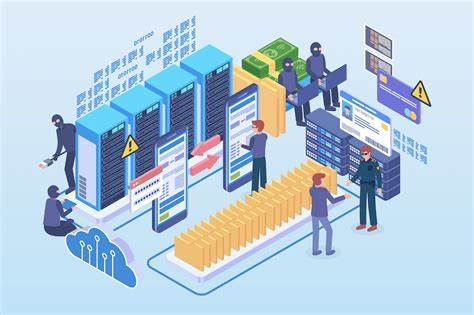
Five Thoughts through Five Favourite Quotes on Performance Metrics
Numbers tell stories – and metrics are the tools through which these stories get shape and substance. And yes, I am mad about metrics. And I know I am not alone in my fascination for metrics. There are tons of metrics to choose from and the right performance metric for your business may not be the right one for mine. I have been asked many times on how to know when to introduce metrics, what the right metric is, and how to work the metrics so that the metrics work for you. So through this post, I will try to answer these questions through another passion of mine – quotes! I LOVE quotes (as do the majority of internet users going by the number of quotes shared every minute) – do you too get the feeling sometimes when you read a quote – ahh, I totally get that one, I wish I had written that – an Eureka Moment ?
Quotes are distilled pieces of wisdom. And when it comes to metrics, my experience is that getting the perfect metric and the perfect outcome as a result of tracking the metric needs a lot of hard work and experimentation – so wisdom from people who have been there, done that certainly goes a long way in making the metrics journey easier. So, here are the five quotes on performance metrics, pieces of wisdom that have helped me crystallize my approach to key performance metrics:
“Measure what is measurable and make measurable what is not so.” – Galileo
From the Father of Modern Science comes this gem. The thought to keep in mind when you have to begin from the beginning with metrics. The second half of the quote – make measurable what is not so – stands out to me – just because you can measure something easily is no good reason for measuring something. Metrics need to be tied to the desired business outcomes. And we need to spend some time assessing what metrics we have already and what metrics we need, and then going back to work on creating the systems and processes that will provide the data for quantification in a shape and form that will allow us to measure that. Data collection, analysis and management is most often cost and labour-intensive – so that part should always be weighed against the benefit derived from the metric. Don’t start something you can’t sustain in the long run.
“The ability to simplify means to eliminate the unnecessary so that the necessary may speak.” – Hans Hofmann
What not to measure is sometimes more important than what you do measure. Selection of the right performance metric for your business is critical. Do not introduce metrics just for the sake of metrics – it serves no one and the whole purpose is defeated. Start with what is the business goal that you need to track and improve, what are the processes related to that goal, and what metric would best reflect the productivity of the process. Measure only that which is important, that which provides real value to the process in question, which can be easily understood by all stakeholders and is ACTIONABLE. Control your love for metrics and don’t produce reams of excels and slides and/or dashboards that make peoples’ eyes glaze over right from the start. Be ruthless in cutting down the unnecessary so that the necessary can stand out and shout.
“If you torture the data long enough, it will confess to anything.” – Ronald Coase
One of my favourites and sorry to say, one that I am reminded of time and again in the corporate world. Data through metrics must speak the truth even when (and especially when) it does not serve our personal needs. As professionals, we have a responsibility to ourselves and our organizations to be honest, transparent and collaborative. How you measure is as important as what you measure. Don’t devise metrics out of the data just to show things in a good light or in a bad light – keep doing that and there will soon be nothing left to measure. Design the metrics and the data collection systems in such a way that it throws the spotlight on the business outcome and is balanced to reward productive behaviour and discourage “game playing”.
“There is nothing so useless as doing efficiently that which should not be done at all.” – Peter F. Drucker
This one is a popular quote and one that has served me well every time I enter a new setup or review a long running process. Business is dynamic, why should metrics remain static? What made sense to measure last month, quarter or year may have become completely irrelevant to measure today. Many a times I have found during reviews, a metric that no one remembers why it is being used, knows who is using it or where it is being used. Trust me, the same is true for many processes as well. There may have been a good reason once sometime in the past that makes absolutely no sense today. So keep reviewing, keep questioning and keep going back to the drawing board with your list of chosen metrics so that they remain relevant and useful.
“An idea not coupled with action will never get any bigger than the brain cell it occupied.” – Arnold Glasow
Do I see you nodding your head to that? All data, dashboards, metrics are useless unless the knowledge and insights derived from them are translated into action. Ask yourself – what story does this metric say, how can it help the leadership make the right decisions (more, less, better, different?) and arrive at an action plan when necessary? Every metric should be mapped to an end goal and have an action plan defined for improvement, sustenance and excellence. The action plan reviews should go hand in hand with the metric reviews feeding each other in a continuous loop. If the metrics are chosen carefully and presented properly, then, in the process of achieving their metrics, people will make the right decisions and take the right actions that enable the organization to maximize its performance. And that is when you know you have done your job well.
So, there you have it, the method and mechanism behind key performance metrics through learned wisdom. Metrics matter, metrics need work for them to work, metrics tell a story – the ending of which you have the power to change. Make your Metrics Rock!
What are your favourite quotes on performance metrics? What wisdom have you gathered on setting key performance metrics ? What has worked for your business and what has not? I would love to hear back and learn from you.
Pic Courtesy: http://www.flickr.com/photos/rubyblossom/4674821065/





